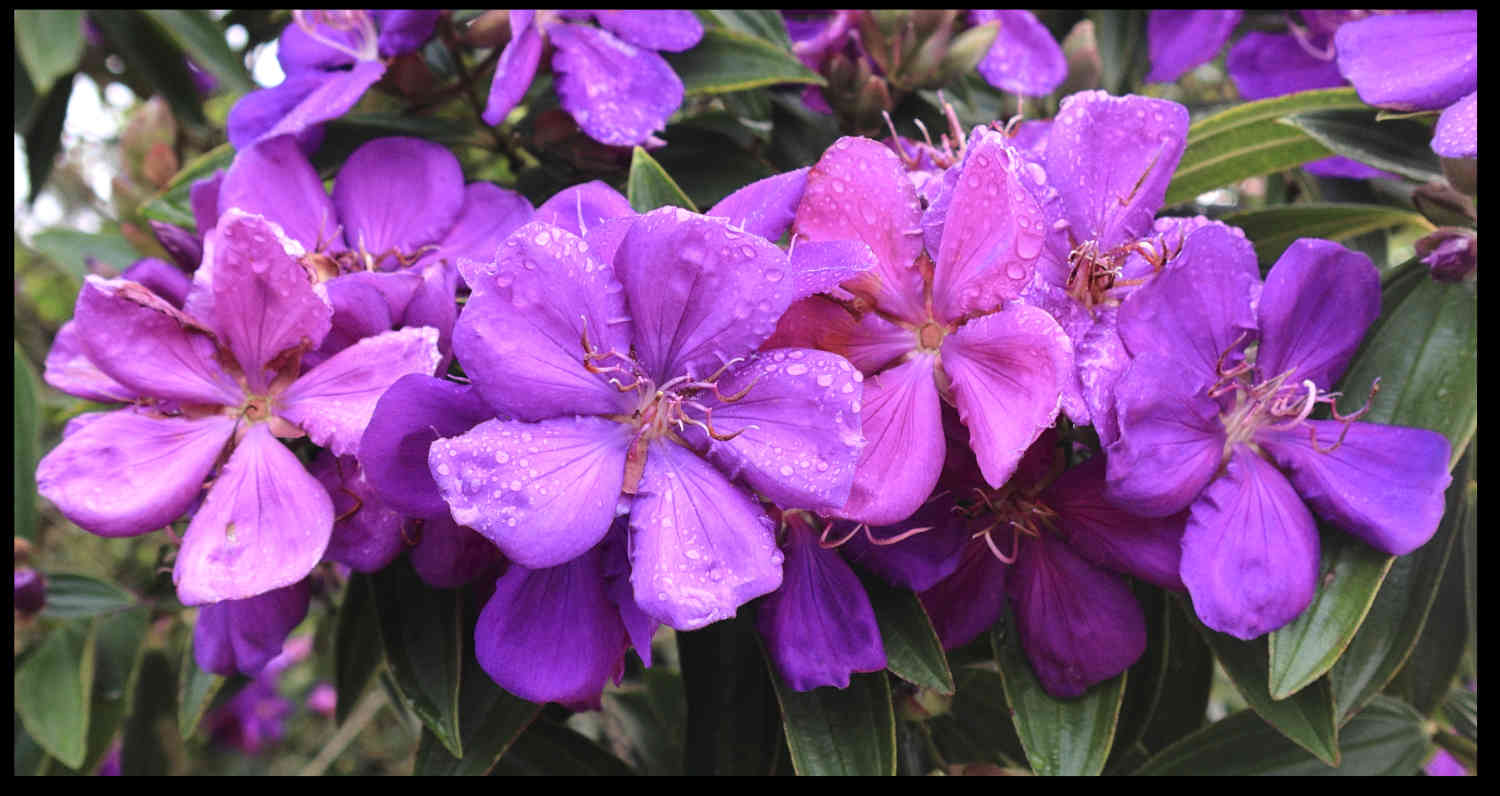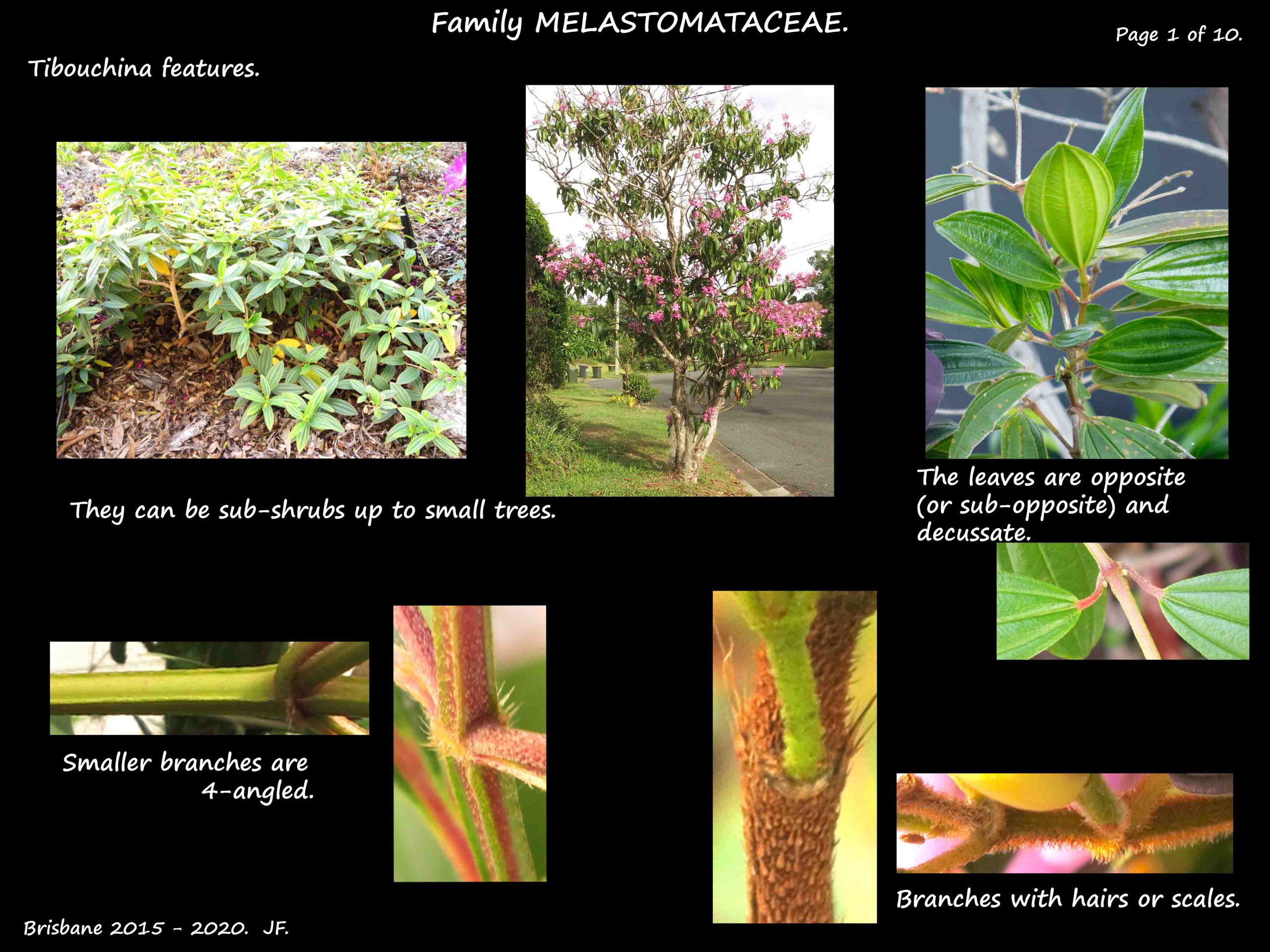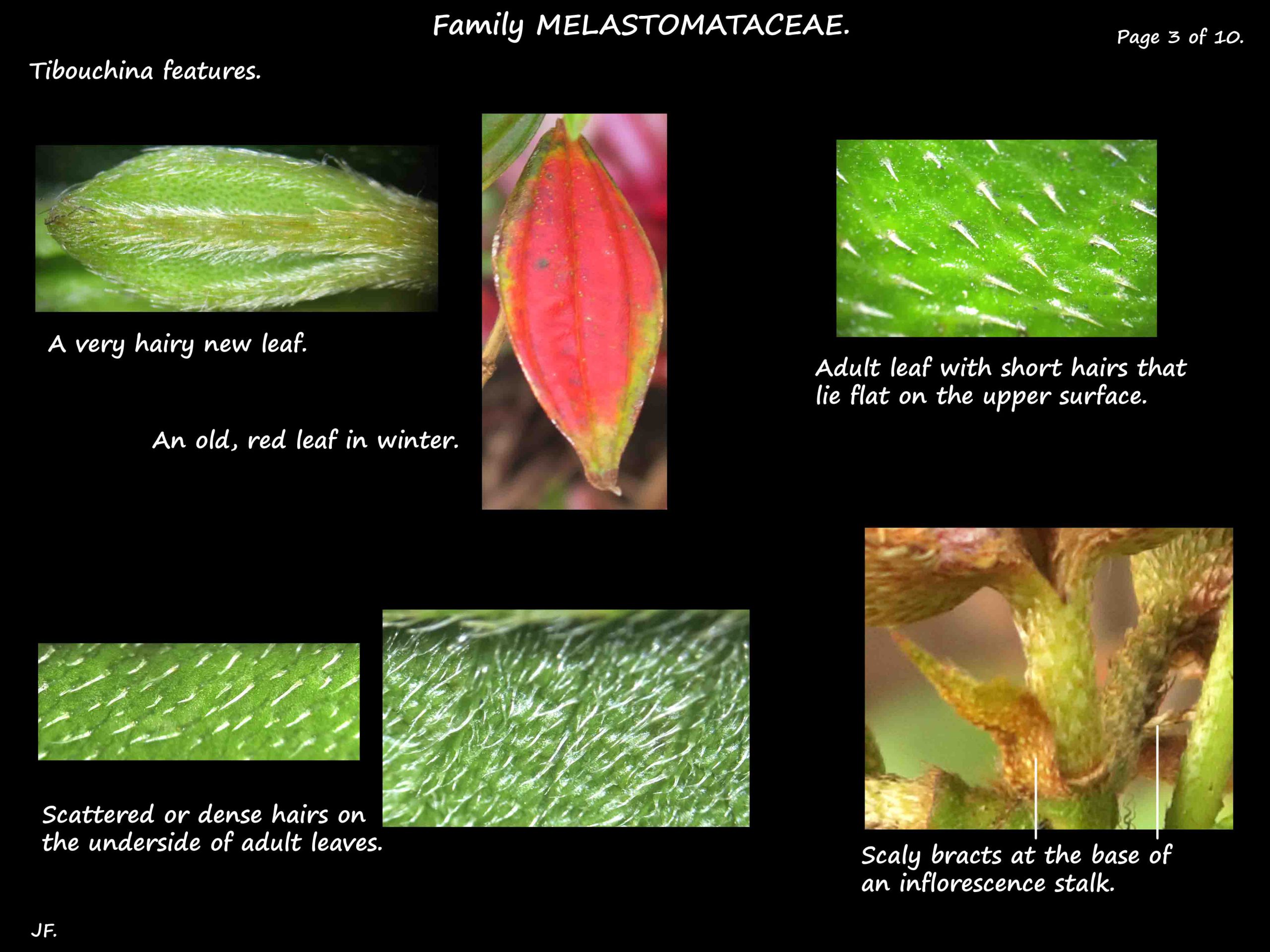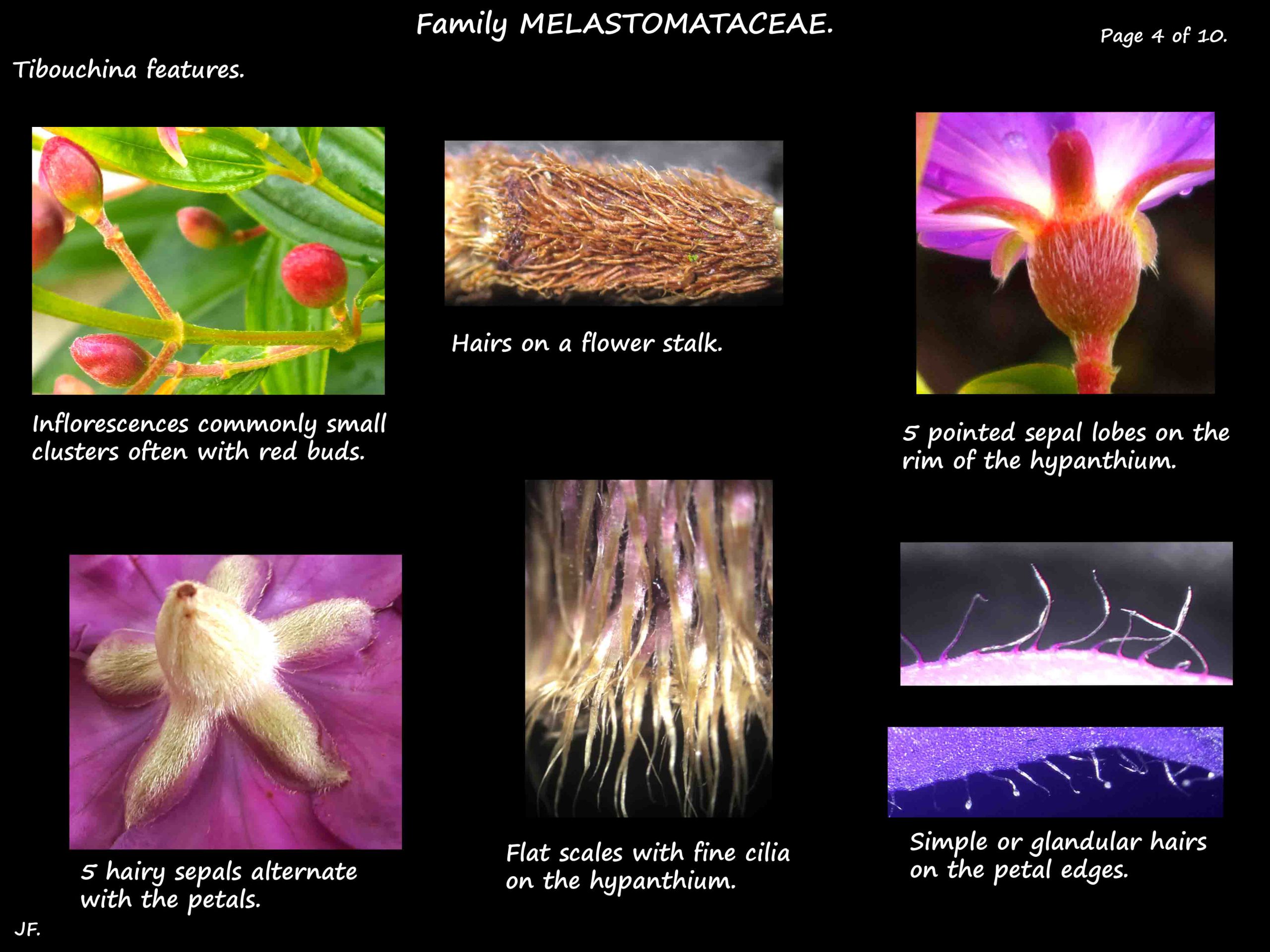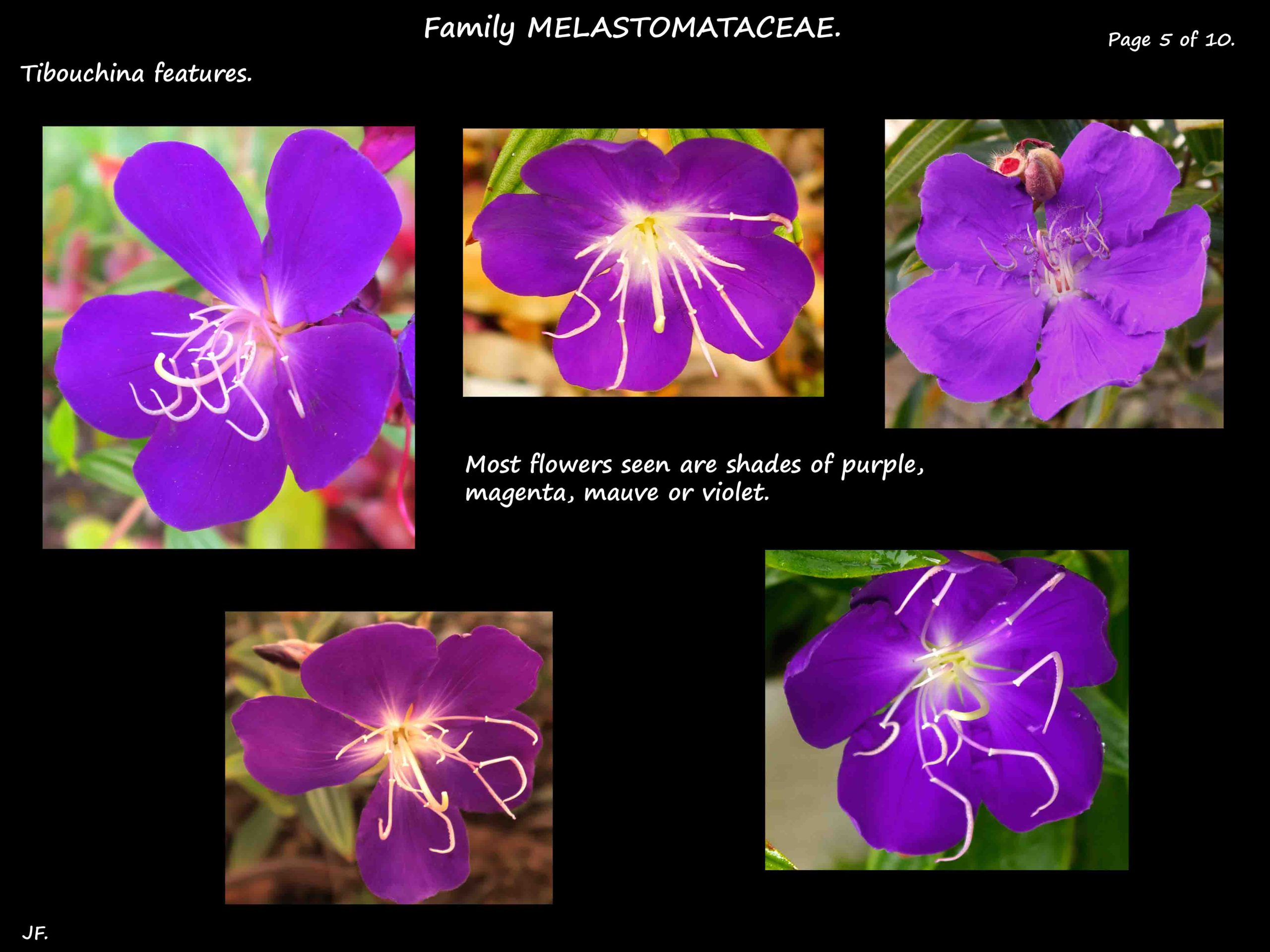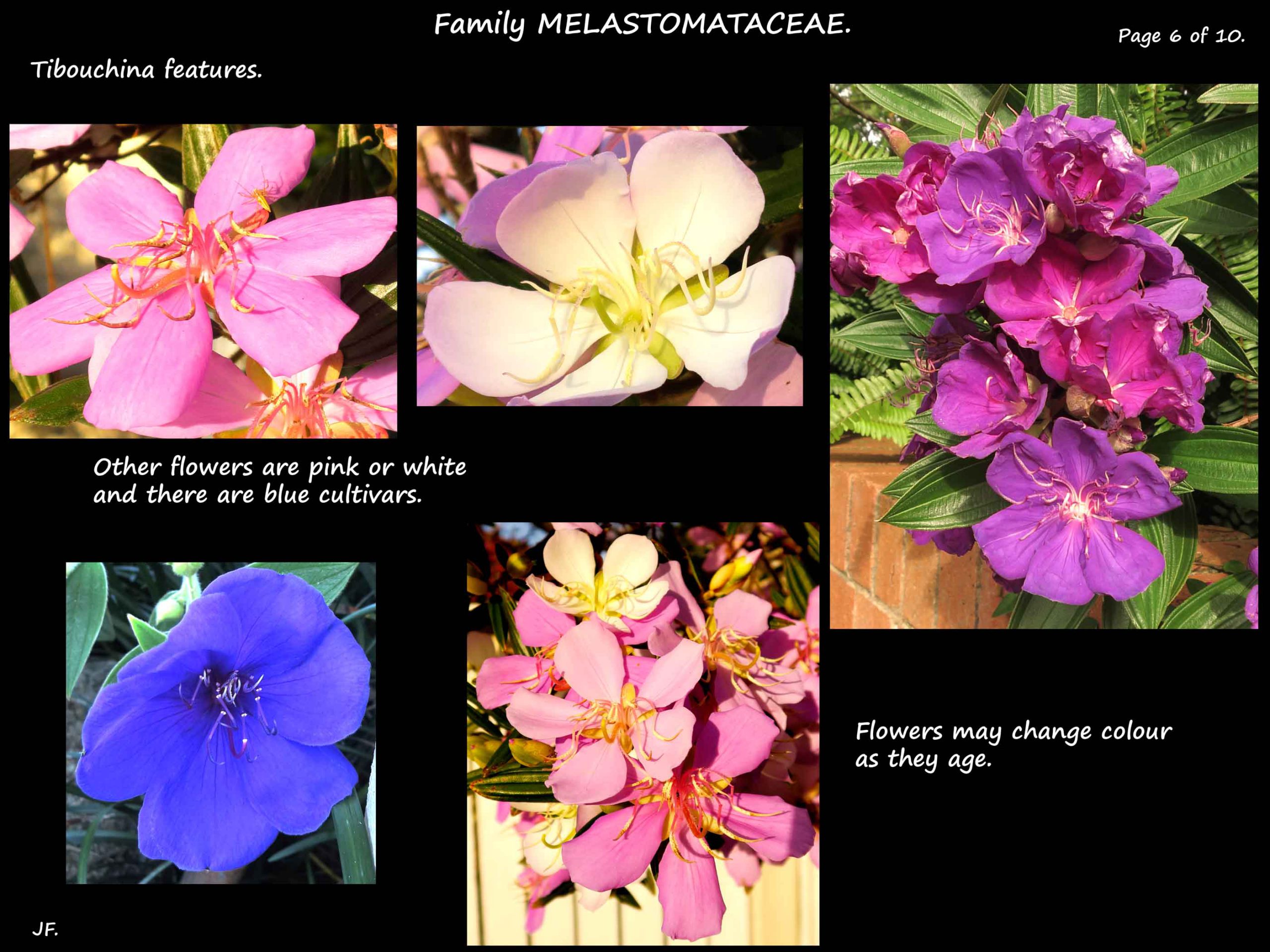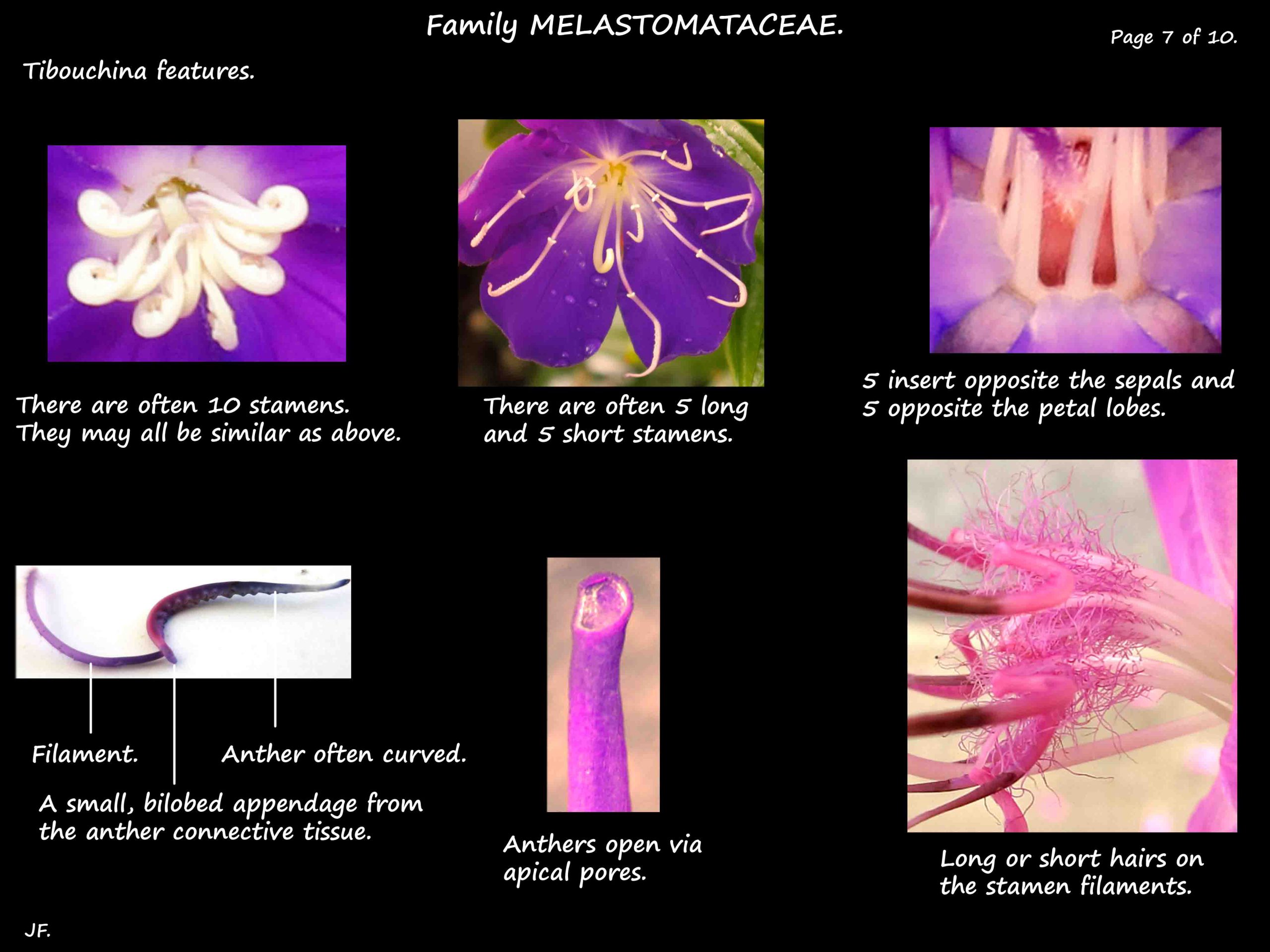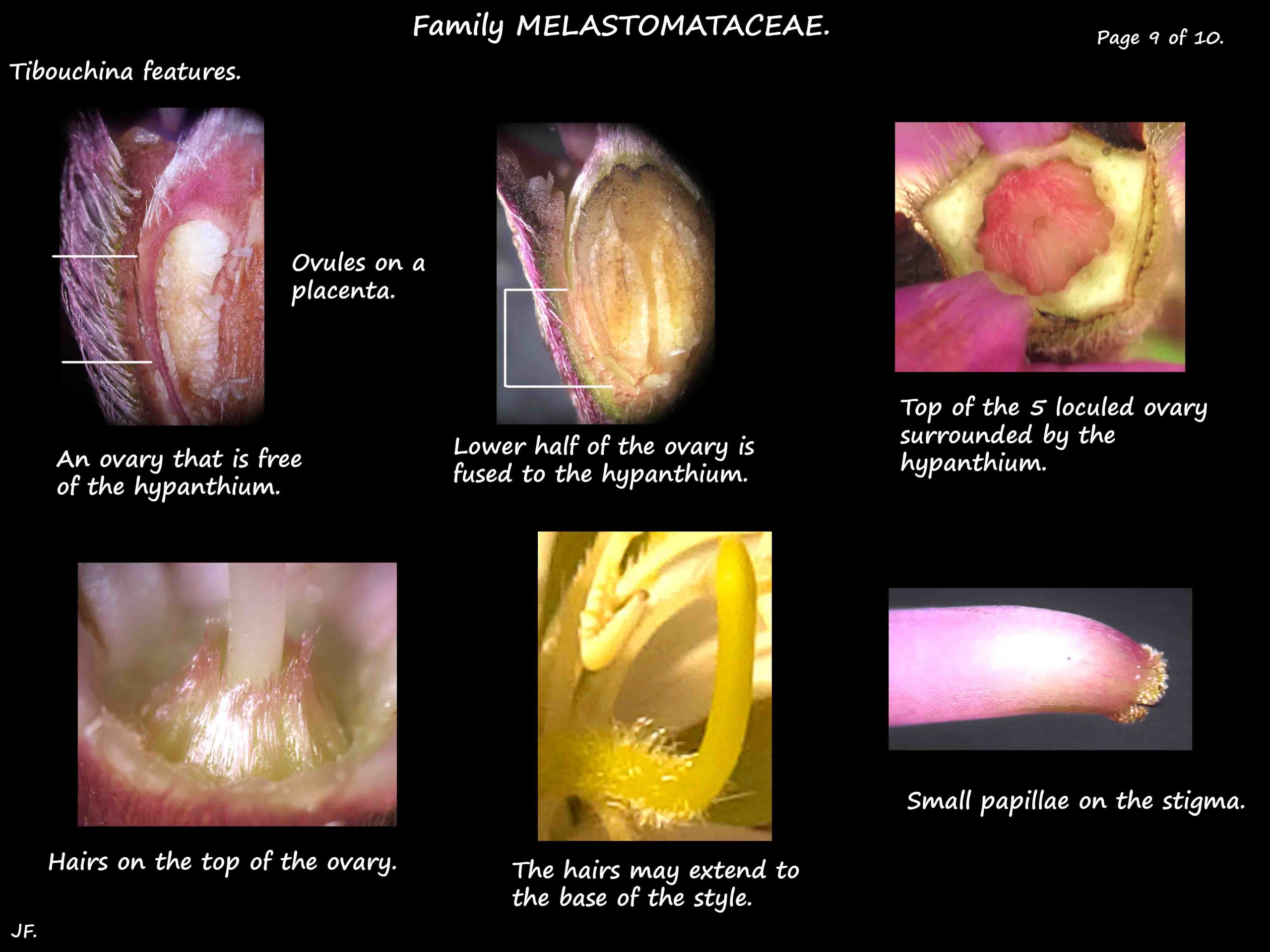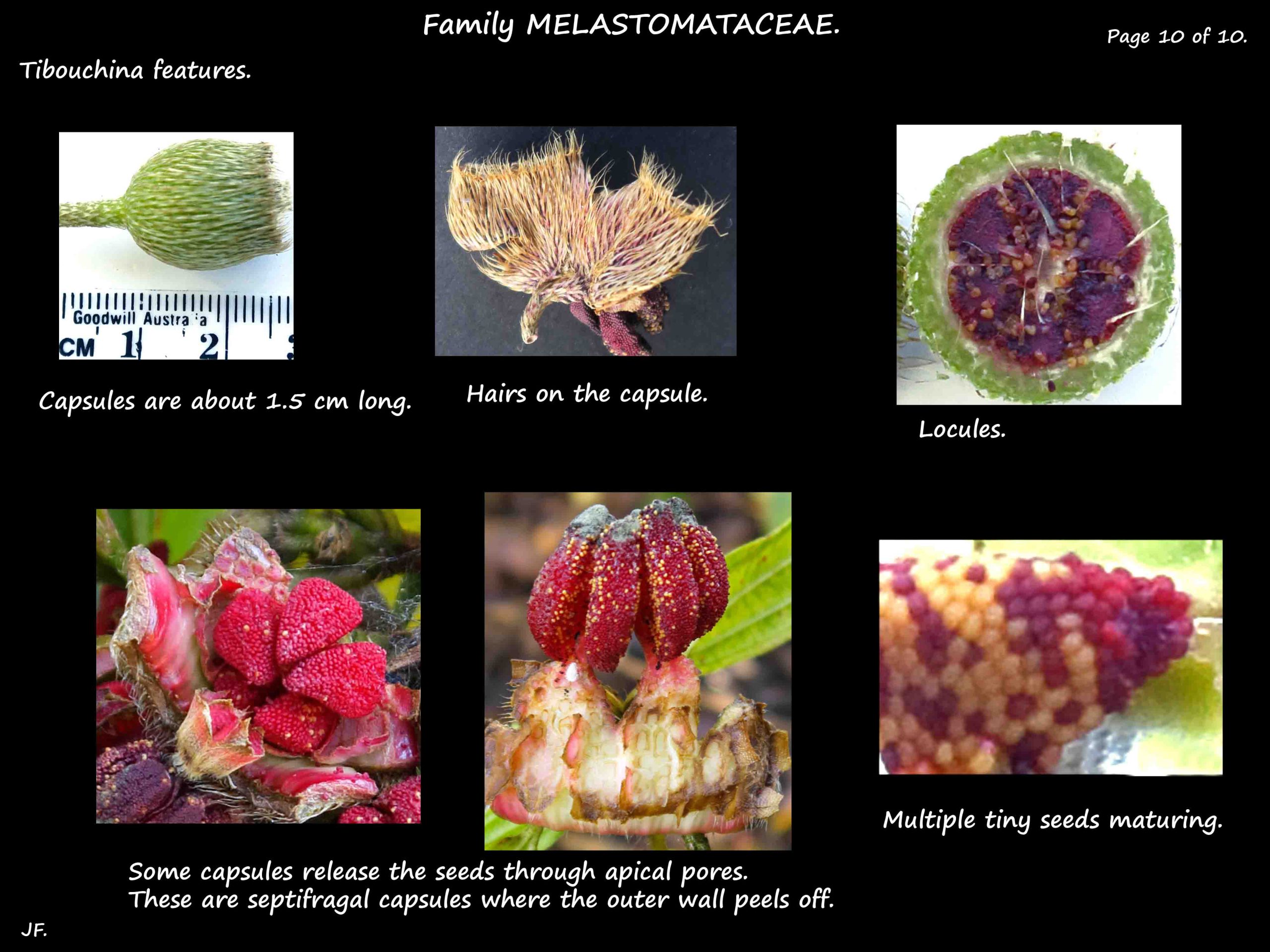Tibouchina.
In Family Melastomataceae and there are about 240 (350) species.
In Australia they are sometimes seen as Lisiandra.
They are evergreen sub-shrubs, shrubs, climbers or small trees.
Smaller stems are 4-angled and the leaves are opposite or almost so.
The simple leaves can be ovate, elliptic or lanceolate.
They are a deep green but new growth can be bronze and old leaves red or yellow in winter.
New and adult leaves are hairy.
There are 3 to 7 longitudinal veins but the intramarginal pair may be fine and faint.
There are many cross veins between the longitudinal ones.
The veins are depressed on the upper surface and prominent below.
The small branches, petioles and the hypanthium and sepal lobes have scales.
Terminal flowers are mostly in clusters but can be solitary.
Flower parts are in 5’s with the stamen number sometimes doubled.
Flowers are typically shades of magenta or purple but some are pink or white.
The stamens may all be similar or of 2 types.
The anthers have appendages from the anther connective tissue.
There may be hairs on the filaments.
The fruit are capsules that open in various ways.
Tibouchina species, hybrids and cultivars.
A few species and many cultivars and varieties are cultivated around the world.
Identification can be difficult as the flowers of many cultivars are very similar
with the main differences being in the size of the plant.
The same common names are sometimes applied to different cultivars.
In some cases it is not certain if names are synonyms or distinct species.
The origin of some cultivars is unknown.
Some Melastomas are very similar.
J.F.
